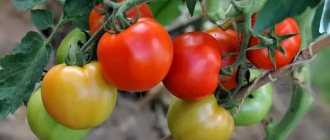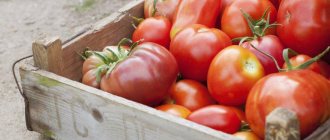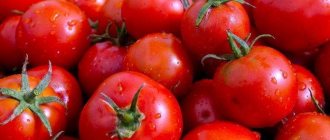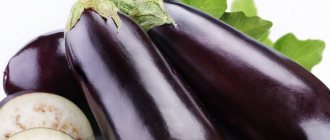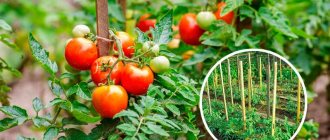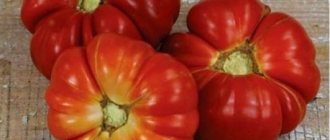Gone are the days when eggplants were grown only in the southern regions. Thanks to the efforts of breeders, this healthy vegetable has been successfully cultivated in the middle zone for a long time. However, in northern latitudes it is better to grow eggplants under cover.
Southern culture loves warmth, abundant watering and needs special protection from diseases and pests. All these conditions are easier to provide in a greenhouse rather than in open ground.
Most often, early and mid-ripening varieties are grown in greenhouses. Some gardeners prefer low-growing plants, since in this case the eggplants in the greenhouse do not need to be tied up additionally. What varieties and hybrids of eggplants for greenhouses can be recommended to both beginners and experienced gardeners?
- How to grow eggplants in a greenhouse
A capricious eggplant does not want to produce a full harvest in the greenhouse? We will tell you what is missing and how to help solve the problem.
Eggplant Almalik F1
Almalik F1 is an early ripening hybrid intended for cultivation under film covers. The plant is semi-spreading, the height of the bush usually does not exceed 50-70 cm.
The fruits are elongated, pear-shaped, and ripen approximately 4 months after emergence. The average weight of an eggplant is 250-300 g, length – 16-22 cm, diameter – 6-8 cm. The color of the fruit is traditional for eggplants, dark purple. The skin is smooth and glossy. Calyx without spines. The pulp is medium density, yellowish-white in color, no bitterness. The taste is excellent, making the fruit good both fresh and processed.
Hybrid Almalik F1 has good keeping quality and transportability.
| Purpose | Productivity (kg/sq.m) | Fruit weight (g) | Maturation (days) | Flesh color |
| 7,5 | 250-400 | 110-120 | Yellowish white | |
Eggplant Bagheera
This variety is distinguished by early fruiting and small, compact bushes with abundant foliage. The fruits are oval, dark purple with a glossy sheen. The pulp is practically not bitter, and the taste pleases with richness and depth. Bushes of this variety are grown using low-volume technology (growing in small containers where peat, vermiculite, etc. are used as a substrate), so it is recommended for small greenhouse farms. Ripe fruits are stored well and do not lose their presentation for a long time. High yield and resistance to various diseases are two more compelling arguments for positive reviews of the variety.
| Purpose | Productivity (kg/sq.m) | Fruit weight (g) | Maturation (days) | Flesh color |
| 10-12 | 280-350 | 100-110 | Greenish white | |
Eggplant Baikal F1
The bush of this mid-season hybrid grows to impressive sizes, reaching 1.2 m in height. The plant is recommended for cultivation in all types of greenhouses. The fruits are pear-shaped, medium in size, dark purple in color with a glossy surface. The pulp is medium density without bitterness. The fruits make excellent caviar; they are pickled, salted, stewed and fried. Baikal F1 eggplants are quite resistant to various diseases and at the same time unpretentious in cultivation.
| Purpose | Productivity (kg/sq.m) | Fruit weight (g) | Maturation (days) | Flesh color |
| 6-8 | 320-350 | 100-110 | Greenish | |
How to choose the best variety
There are so many advances in seed selection that when you come to the store, you get lost and don’t know what to choose. To avoid making a mistake with your choice, think through a plan for future plantings in advance.
When choosing seeds, be sure to consider:
- greenhouse area (for a standard-sized greenhouse, 1-2 productive hybrids are enough);
- planting density (for a compacted pattern, options with a compact, sparsely leafed crown are suitable);
- desired time for harvesting vegetables;
- personal taste preferences;
- greenhouse climate (heated or not);
- for food or storage.
If the greenhouse area is standard , then 2-3 productive hybrids are enough.
Eggplant Balagur
This variety of eggplant has an unusual type of fruiting - carpal. Up to 4-6 fruits are formed on one brush, and from 50 to 100 fruits can be collected from one bush. The non-standard type of ripening also determined the unusual shape of the fruits - they are elongated, oval, and have a bright purple “acid” color. Their peel is quite thin, and the flesh has a good taste. The variety is ideal for a greenhouse - the bushes do not exceed 1.3 m in height. The plants perfectly resist the tobacco mosaic virus and many other diseases.
| Purpose | Productivity (kg/sq.m) | Fruit weight (g) | Maturation (days) | Flesh color |
| 6-8 | 80-130 | 85-100 | White | |
Possible growing problems
Plants in the greenhouse must be regularly inspected in order to detect the presence of diseases in time and promptly carry out preventive measures against insect pests. Phytophthora and tobacco mosaic are the most common diseases of eggplants in greenhouses. Late blight appears on the leaves as brown spots, spreading to the stems and fruits. If measures are not taken in a timely manner, the plant will die. The tobacco mosaic virus first colors the leaves in light colors, and then a dark green “mosaic” appears on them. To combat these ailments, the drugs “Zircon”, “Fitosporin”, “Antrakol” are used.
To avoid plant rotting and the appearance of a fungal disease - gray rot - it is necessary to ventilate the greenhouse where eggplants are grown all day on hot days. This will help improve ventilation and reduce humidity in the greenhouse.
The Colorado potato beetle, spider mites, whiteflies, aphids and slugs can cause significant damage to vegetable crops. To combat these insect pests, it is necessary to use products purchased in specialized stores (Fitoverm, Aktellik, Aktara), but you should not get carried away with “chemistry” during fruiting. It is better to remove pests manually or install sticky traps.
Eggplant Baron F1
Baron F1 is a mid-season hybrid intended for cultivation in film greenhouses. The plant is medium-sized, about 70-80 cm high and 65 cm in diameter. No more than six bushes should be placed per 1 sq.m, placing the plants at a distance of 40 cm from each other - in a row and 60 cm - between rows. When forming, the manufacturer recommends removing all side shoots and leaves up to the first fork and leaving three main stems. From mid-summer you need to remove all small ovaries and flowers, leaving only 5-6 large ovaries.
The fruits are elongated-cylindrical in shape, with a dark purple glossy surface. The average length is 16-22 cm, diameter is about 7 cm. The pulp is medium density, yellowish-white in color. The taste is excellent, without bitterness.
Hybrid Baron F1 is resistant to many nightshade diseases and is not afraid of heat. The fruits are well stored and can withstand transportation.
| Purpose | Productivity | Fruit weight (g) | Maturation (days) | Flesh color |
| 2.8-3.1 kg per bush | 300-350 | 100 | Yellowish white | |
Planting seedlings in a greenhouse
Each vegetable crop differs from others in the size of the root system and the size of the bushes. And so that there is no competition between eggplants for light and nutrients, the planting scheme must be chosen correctly, otherwise the crop yield will decrease.
Yes, these plants have increased demands on development conditions, but the gardener can finally decide on the distance when he knows which varieties will grow in the greenhouse.
As you can see from the description, the parameters of different varieties of eggplant differ significantly from each other. For small specimens, the optimal distance in a row is from 30 to 45 centimeters. The distance between rows can reach 50 centimeters. Spreading - 50 centimeters in a row and 65 centimeters between rows.
Eggplant Behemoth F1
Behemoth F1 is a mid-season hybrid for film and glazed greenhouses. The plant is powerful and vigorous. Under film cover, the height ranges from 70 cm to 1.5 m; in glass, the bushes can reach 2.5 m. Support and garter are required. When forming, the manufacturer recommends removing all side shoots and leaves before the first fork. Planting pattern – 40×60 cm.
High-yielding hybrid. The volume of the harvest depends on the growing conditions: on average it is 3 kg per plant, but if all the rules of agricultural technology are followed, it can reach 6 kg.
The fruits are elongated, pear-shaped. Length – 14-18 cm, diameter – from 4.5 to 8 cm. The skin is dark purple, with a strong shine. The pulp is medium density, light, and has excellent taste. There is no bitter aftertaste, which allows eggplants to be used as food not only after heat treatment, but also fresh.
Hybrid Behemoth F1 is resistant to tobacco mosaic virus and is little susceptible to fungal diseases.
| Purpose | Productivity | Fruit weight (g) | Maturation (days) | Flesh color |
| 1.8-2.5 per bush | 250-350 | 100-110 | Yellowish white | |
Eggplant City F1
The large and powerful spreading bushes of this plant will not leave anyone indifferent. They reach 3 m in height and delight with large cylindrical fruits and dark purple color. The pulp is dense and does not become overcooked during stewing and frying. To get such large fruits, you need to be patient, because the hybrid is a late hybrid. But ripe eggplants are stored for quite a long time, and “are not afraid” of transportation. The hybrid is resistant to the tobacco mosaic virus and some other diseases, especially if you do not violate agricultural practices and plant the plants in a greenhouse.
| Purpose | Productivity (kg/sq.m) | Fruit weight (g) | Maturation (days) | Flesh color |
| 7-8 | 400-500 | 120-135 | Greenish | |
Technology for growing eggplants in a greenhouse
In order to achieve active fruiting, in addition to selecting suitable varieties, the gardener must know the secrets of preparing a greenhouse for eggplants and the rules for growing this crop.
Prepare the greenhouse like this:
- Clear the area of all unnecessary things. Last year's stakes, ropes, and equipment are removed. Remove organic residues from the greenhouse.
- Check the condition of the supporting structure and cladding.
- Wash the inside of the greenhouse with warm water and detergent.
- Treat with a steam generator or lime with chlorine.
- Wash off all chemicals with clean water.
- If necessary, sulfur bombs are lit.
After the above-ground part of the greenhouse is in order, you need to take care of the soil. It will also have to be disinfected. To do this, take a weak solution of potassium permanganate (alternatively, copper sulfate, Fitosporin or Fundazol can replace it) and water the soil surface. After some time, they dig up with organic matter.
You need to grow eggplants correctly by observing planting dates, growing seedlings from seeds, and caring for plants in a greenhouse.
Eggplant Maxik F1
Maksik F1 is an early ripening hybrid, which in the middle zone is recommended to be grown in any type of greenhouse. In more southern regions, planting in open ground is possible. The plant is semi-standard, quite compact. The height under cover exceeds 90 cm. The hybrid is high-yielding, but the number of fruits depends on the place of growth. When grown in open ground, it is possible to harvest no more than 8-9 kg per 1 sq.m., but on the same area in a greenhouse, the harvest often exceeds 10 kg.
The fruits are elongated, cylindrical in shape. The average weight of an eggplant is about 200 g, length - up to 25 cm. The spines on the cup are either completely absent or present in very small quantities. The skin is smooth, glossy, dark purple in color. The pulp is light, dense, not bitter at all, there are few seeds. The taste of eggplants is excellent and the presentation is excellent. The fruits are fast-growing and transportable, and are used for all types of culinary processing.
Hybrid Maxik F1 is resistant to tobacco and cucumber mosaic viruses. Easily tolerates temperature changes and soil salinity.
| Purpose | Productivity (kg/sq.m) | Fruit weight (g) | Maturation (days) | Flesh color |
| 8-10 | 180-250 | 90-100 | Greenish white | |
Harvest and storage
It is recommended to pick eggplants slightly unripe (too large eggplants become tasteless); it is best to cut them with pruning shears, along with the stalk.
You can store eggplants for about 1 month, in a basement or cellar with an air temperature of 5 to 10 degrees Celsius. Storage methods:
- each vegetable is wrapped in paper and put into boxes;
- The fruits are placed in plastic bags with holes for ventilation.
Eggplant Pelican F1
Pelican F1 is a hybrid with medium ripening periods, which in the middle zone is recommended to be grown under film cover; in warmer regions, planting in open ground is also possible. The bushes are powerful, 1.2-1.8 m high. A garter and support are required.
The fruits are cylindrical or slightly curved, leveled. There are no thorns on the cups, which makes harvesting easier. Eggplants are small in size: length - 16-17 cm, diameter - 4-5 cm. Average weight is about 100 g, but some specimens can grow up to 250 g. A distinctive feature of the Pelican F1 hybrid is the color of the fruit: they are milky white, which is this vegetable is atypical. The skin is matte. The pulp is white, medium density, tender. The taste is excellent, there is no bitterness. The fruits are storable and can withstand long-term transportation.
Pelican F1 is resistant to many nightshade diseases.
| Purpose | Productivity (kg/sq.m) | Fruit weight (g) | Maturation (days) | Flesh color |
| 7,4-7,5 | 90-135 | 116-120 | White | |
Which varieties are the most productive (with description)
Farmers are very concerned about the efficiency of growing a crop, that is, its yield. After all, you don’t want to fuss with the sprouts for almost six months (and that’s exactly how long it takes the process of sowing, forming seedlings, adult bushes before harvesting the fruits) and not get anything.
Therefore, in addition to resistance to temperature changes and diseases, it is important to take into account the yield of the variety. According to this criterion, the favorites are:
- Bagheera - ripening on 100-110 days, quite friendly and plentiful. You can get up to 12 kilograms of raw materials per square meter. The fruits weigh up to 350 g, but are often smaller, medium in size, with greenish flesh without bitterness, are well stored, and have high disease resistance.
- Black beauty is mid-season with a yield of up to 13 kg/m2. The bush is compact, fruiting is friendly. Eggplants are pear-shaped, weighing up to 250 g, almost black, glossy, the flesh is white-green, dense, very tasty.
- Vakula is an early ripening variety, which, nevertheless, manages to produce a harvest of up to 12 kg/sq.m., the height of the bush is up to 2 meters (requires garter). The fruits are dark purple, weighing up to 400 g, with white tender pulp.
- Maxik is a compact bush up to 60 cm high with elongated cylindrical dark purple glossy fruits weighing 150-250 g. Inside the eggplant is greenish-white, dense, with excellent taste. Productivity 10 kg/sq.m. landings.
- The namesake is a compact bush with sparse thorns, the fruits are large, about 500 g, sometimes up to 800 g, of a beautiful purple color. Universal use, yield up to 12 kilograms per square meter of planting.
- Pink Flamingo is a mid-early variety up to 1.8 m high, long fruits (up to 45 cm) of bright purple color with snow-white flesh, few seeds. High yield due to the formation of brushes.
- Alekseevsky - forms beautiful dark cylindrical fruits with a white, dense core. Eggplants weigh about 250 g and are suitable for processing and storage. With proper care you can get 10 kg/sq.m.
- Black suit is an erect, semi-spreading bush up to 1.6 m high, with pear-shaped fruits up to 18 cm long and weighing about 400 grams. You can collect up to 8 kg/sq.m.
- Overseas minke whale is another variety with uneven color. The bushes grow up to 120 centimeters, require a garter, the fruits are elongated, purple-white striped, weigh up to 900 g, the pulp is not bitter. From sq.m. you can collect 9.5 kilograms.
- Bull's forehead is a low-growing spreading plant with high yield, the fruits are pear-shaped, dark purple, weighing up to 1 kg.
The greenhouse allows you to control the growing conditions of crops, which is especially important for heat-loving eggplants. It helps to artificially increase the duration of summer and get a decent harvest even in a cool climate. Now the eye is pleased with the variety of varieties - long, round, like elongated icicles, heart-shaped, purple, black, green, lilac, white, red, without seeds, without bitterness.
There are so many! All that remains is to choose those that you like the most, which are also quite resistant to disease and less troublesome to care for. Have a successful summer season and a good harvest!
Eggplant Solomon
Solomon is an early ripening variety of eggplant, which is intended for cultivation in film and glass greenhouses. The plant is vigorous. The height depends on the place of growth: in spring greenhouses it usually does not exceed 1.5 m, but in heated greenhouses the bush can easily reach 2.5 m. Support and garter are required. When forming a plant, manufacturers recommend leaving no more than 2 stems. No more than two bushes should be planted per 1 sq.m.
The fruits are oval-pear-shaped, very large. The average length is 20-27 cm, diameter is 17-19 cm. The weight of the fruit is amazing: if you follow all the rules of agricultural technology, you can grow eggplants that weigh more than 1 kg each! The yield of the variety is also surprising: it is consistently high and often exceeds 16 kg/sq.m. The fruiting period is long.
The skin of the fruit is glossy, dark purple, traditional for eggplants. The calyx is green, there are no spines. The pulp is dense, light, and has an excellent taste. The fruits are good both fresh and processed.
The Solomon variety is resistant to tobacco mosaic virus.
| Purpose | Productivity (kg/sq.m) | Fruit weight (g) | Maturation (days) | Flesh color |
| 14,2-16,3 | 650-1100 | 100-120 | Greenish white | |
Eggplant Sophia
This late-ripening variety is loved because it is equally comfortable everywhere - in open ground, under film cover, and in a greenhouse. Ideal for owners of small plots. The bushes are semi-spreading, low, strewn with large, thick pear-shaped fruits. The color of the fruit is black-violet. They tolerate unfavorable weather conditions well. The pulp is dense and without bitterness. Disease resistance is low, so preventative spraying and proper care are required.
| Purpose | Productivity (kg/sq.m) | Fruit weight (g) | Maturation (days) | Flesh color |
| 7,5-8 | 700-900 | 135-150 | White | |
Eggplant Fabina F1
An ultra-early eggplant hybrid that is grown in a greenhouse. The bushes are semi-spreading, of medium height. The fruits are cylindrical, dark purple in color, with a bright glossy sheen. They do not grow too big, but they have a characteristic mushroom taste, which makes it possible to prepare many interesting dishes from them, including Caucasian ones. The fruits are well stored and do not lose their presentation for a long time. The hybrid is quite resistant to many diseases (especially verticillium); plants are not afraid of spider mites.
| Purpose | Productivity (kg/sq.m) | Fruit weight (g) | Maturation (days) | Flesh color |
| 5-7 | 180-210 | 70-90 | Whitish green | |
Which greenhouse to choose?
Eggplants can be grown in a greenhouse with or without heating. The second option is suitable for summer time; the greenhouse helps maintain a stable microclimate, protects plants from gusts of wind, nighttime drops in temperature, hail and other vagaries of the weather. Seedlings are planted in such a shelter in late spring.
Residents of cold regions, as well as those who plan at least 2 harvests per year , should think about building a permanent greenhouse covered with film, glass or polycarbonate and equipped with a combined heating system.
The most affordable option is a greenhouse covered with film . It retains heat well and allows sunlight to pass through. However, the fragile film quickly breaks and deforms; this coating will have to be changed every year. Glass is more durable, but can crack under the weight of snow.
The optimal covering option for greenhouses is polycarbonate . It is not cheap, but it lasts for several seasons without any problems. By investing in such a structure, you will be able to reap good harvests and not have to worry about the annual restoration of the greenhouse. It is better to mount polycarbonate on a metal frame with a special treatment that protects the structure from corrosion.
A greenhouse for growing eggplants can have an arched or pitched shape . Wall structures adjacent to the house, utility room and other structures are also possible. The height and size of the greenhouse depends on the capabilities of its owner.
It is better to grow vegetables in the ground, but some gardeners prefer shelving , which increases the usable area of greenhouses.
To ensure that plants develop well, greenhouses can be equipped with lighting. If the greenhouse is very large, it is recommended to equip it with a drip irrigation . Eggplants are a moisture-loving crop; such watering will help maintain the required degree of soil moisture. Good ventilation will be required.
It is better to heat the greenhouse using a combined method. Biofuel (a mixture of manure and straw, rotted and placed under the top layer of soil) will help maintain the required temperature You can heat the greenhouse using solar panels , an electric boiler, or a fire that drives warm air through pipes. For express heating, heaters or potbelly stoves are useful.
Eggplant Purple miracle F1
One of the most famous and widespread hybrids, which is loved by summer residents for its versatility. The plant feels great both in open ground and in a greenhouse. Surprisingly, at all stages of growth, the bushes and stems are less susceptible to daylight hours and sunlight, which makes it possible to grow them in the regions of the Far North and Siberia. The fruits are dark purple in color, elongated, spindle-shaped, with smooth and shiny skin. There is no bitterness in the pulp, so Violet Miracle eggplants are suitable for any type of processing. The plant's resistance to disease is average, but it is complex (to many infections at once).
| Purpose | Productivity (kg/sq.m) | Fruit weight (g) | Maturation (days) | Flesh color |
| 6-8 | 250-300 | 95-100 | Greenish white | |
Caring for eggplants in a polycarbonate greenhouse
The technology of growing in a greenhouse is quite different compared to care in open ground. A polycarbonate greenhouse has its own microclimate, which, on the one hand, promotes the development of eggplants (more heat), and on the other, affects them negatively (air stagnates, humidity is higher than normal, condensation forms on the walls). Therefore, the gardener’s task is to preserve the advantages of growing conditions and minimize the disadvantages.
How to maintain a comfortable temperature
It is difficult to find a plant that reacts to temperature conditions as sensitively as eggplant. This is due to the fact that inflorescences are pollinated and fruits set only with sufficient heat. The plant feels comfortable at a temperature of 25 °C. If it drops below 15 °C, then the bushes may stop growing, and when, on the contrary, it rises to 35 °C, pollination and the appearance of future fruits stop. Therefore, it is imperative to control the amount of heat.
See also
Description of the eggplant variety Galich, its characteristics and yieldRead
This is done using 2 thermometers. One of them is placed at the top of the structure, and the other in the soil.
To lower the temperature, gardeners perform the following actions:
- ventilate;
- cover the outer surface of the greenhouse with shading material;
- spray it with water and chalk;
- water inside the path.
Watering
Since eggplants are a somewhat finicky crop, it is advisable not to immediately use tap water for watering plants. These bushes require standing water at room temperature. If you water eggplants cold, they will go into shock.
When watering, the liquid should penetrate the soil at least 20 centimeters, where the root system of this vegetable crop is located. Gardeners irrigate only the ground around the eggplants, and leave them dry to avoid the occurrence of fungal infections. Moisten the soil early in the morning, 1-2 times a week. The best invention used in a greenhouse is drip irrigation.
Feeding
Fertilize eggplants in the greenhouse 3 to 5 times per season. Today, the most relevant are complex feedings: Kemira, Mortar. Add 1 ½ tablespoons of these preparations to 10 liters of water.
If the period of formation of future fruits has arrived, then a nitrogen-phosphorus solution is added to the soil, containing 1 teaspoon of ammonium nitrate and 1 tablespoon of superphosphate fertilizer in one bucket of water.
Organic matter, although it has a good effect on the growing season, can only push eggplants to increase green mass. In such cases, it is advisable to use complex fertilizer Biud, which is diluted 1:20.
Bush formation
This important stage of eggplant care is not recommended for all varieties. Only tall and medium-vigorous plants are formed, and low-growing vegetable crops do not need this. Therefore, on compact eggplant bushes, they pick off dried leaves and those that block the sunlight for the ovaries.
The remaining varieties begin to form 14 days after planting in a permanent place of growth. If the plant is depressed, then it is given a week or two of additional time without this procedure.
There are several options for performing the formation:
- In 1 stem. Used for dense plantings. When forming up to 4 leaves, the side branches and inflorescences are broken off. At a height of 8 leaves, the stepsons are removed, and some of the future fruits are left. After the 10th leaf, branches with ovaries are left.
- In 2 escapes. When the eggplant reaches a height of 30 centimeters, remove the top. After the growth of the side branches, the 2 most developed of them are left, and the leaves located below are torn off. Then they take stepsons in a timely manner.
- In 3 stems. They do everything similarly to the previous option.
All tall varieties of eggplant are tied to supports.
Pollination
Eggplants have flowers of both sexes on one plant, and pollination can occur independently. Unfortunately, there are no corresponding insects in greenhouses, and gardeners, in order to increase plant yields, have to slightly move the bushes.
Ventilation
When ventilating greenhouses and greenhouses, open windows, transoms and doors. But they do this on the one hand so that there are no drafts, since they are harmful to eggplants. In greenhouses where there are two entrances, only one of them is opened to avoid turbulence.
Ventilation makes it possible to reduce the temperature and humidity in greenhouses.
Eggplant Black handsome
A mid-season, high-yielding variety that is respected by all greenhouse owners. The plant is compact, seedlings appear actively and amicably. The fruits located in its lower part have a rare feature - they ripen regardless of weather conditions and even with a small amount of sun. They are cylindrical, with a color that can vary from dark purple to almost black. The surface of the fruit is smooth, with a glossy sheen. The pulp is tender and tasty. The variety is resistant to crop diseases.
| Purpose | Productivity (kg/sq.m) | Fruit weight (g) | Maturation (days) | Flesh color |
| 10-12 | 200-250 | 110-115 | Light green | |


